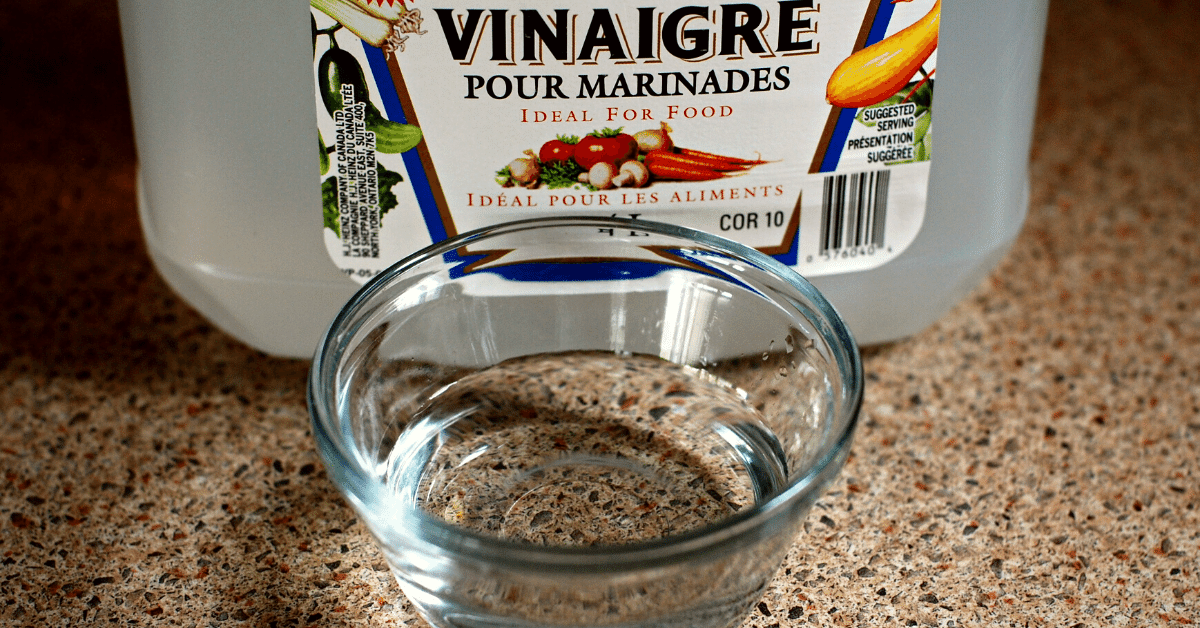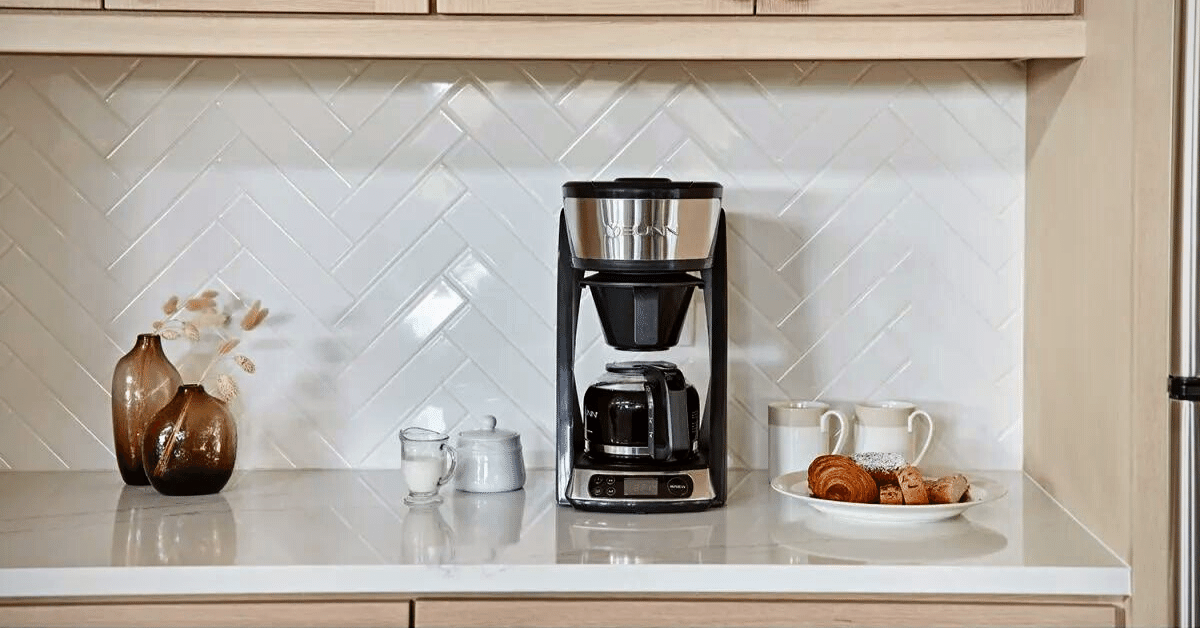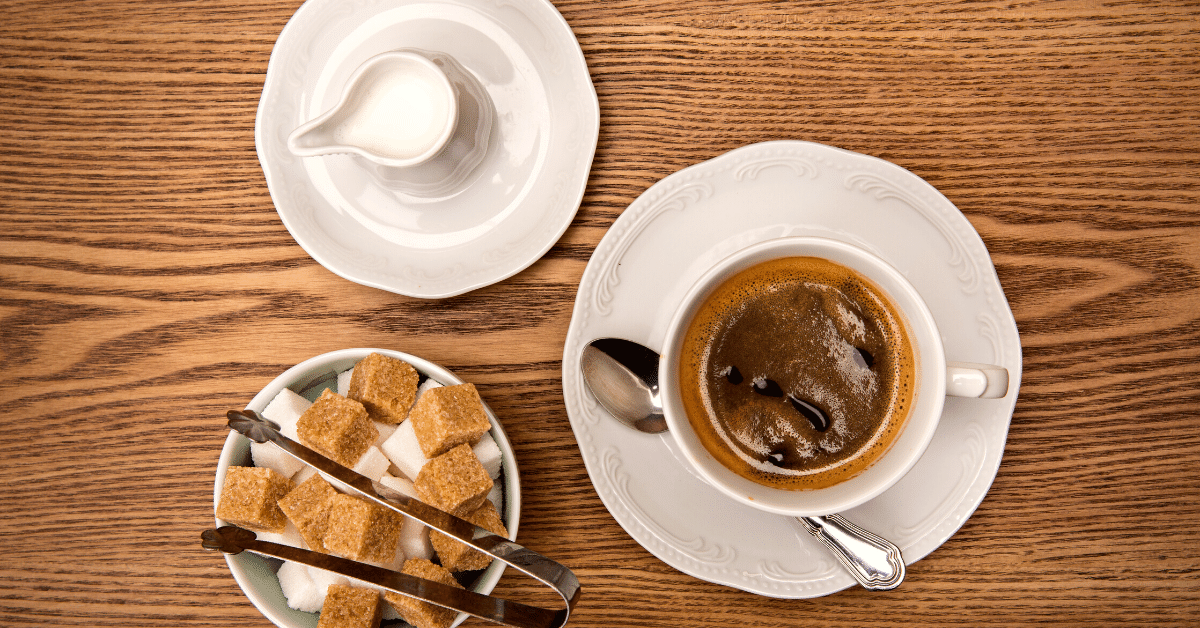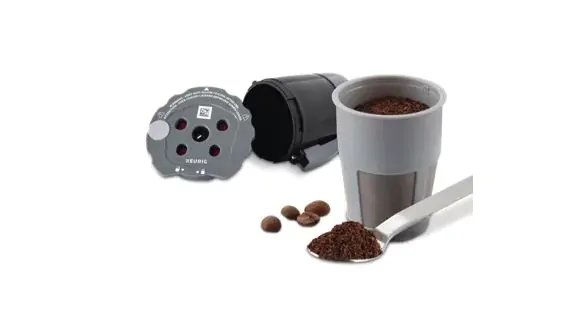Do you know how to clean a Bunn coffee maker? Check out our step-by-step guide and find out how to keep your Bunn coffee maker clean and functional.
If you’ve ever ignored coffee stains and grime on your coffee maker, you’re not alone.
I, too, have skipped cleaning my coffee machine just to avoid doing my chores.
However, this is a big mistake. Doing so can leave you with mineral build-up and dirt that leaves your coffee tasting pretty foul.
To make your job easier, I did thorough research on how to clean a Bunn coffee maker. I’m here to walk you through the steps, plus I will throw in some useful tips so you can do it properly.
Let’s check it out!
Ways to Clean Your Bunn Coffee Maker
Bunn coffee makers need regular cleaning and descaling in order to keep functioning properly. Otherwise, you can wind up ruining your coffee as well as your machine.
The most common signs that your coffee maker is due for cleaning are:
- Your coffee does not taste great
- The coffee maker’s pot has stains inside
- It takes longer to brew a cup of coffee
- The machine’s insides have a bit of chalky material
- Water frequently sputters instead of flowing freely
- Your Bunn coffee maker does not produce the same amount of coffee it normally does
If you notice any of these things, it’s probably time to bust out the cleaning gear.
Now, there are two options here. You can either go for a standard clean or do a deep clean.
Let’s take a closer look at both methods.
Standard Cleaning
The standard cleaning method is the simplest way to get residues out of your coffee maker.
It’s straightforward, doesn’t require a lot of tools, and will keep your machine working properly.
I recommend cleaning your brewer at least once or twice a week.
This effectively maintains your appliance and ensures it runs efficiently and properly.
To get started with this cleaning method, you’ll need:
- Warm water
- Mild detergent
- Soft cloth
- Another damp cloth
- A toothpick
With that gear in hand, you’re ready to get to work!
Here’s what you’ll need to do:
- Turn off your coffee machine. Cleaning requires using water, and your appliance should be switched off to prevent the risk of electrocution.
- Remove the coffee filter and grounds that are currently in the machine. Throw them into the trash and wash the filter basket to remove any coffee grounds and residue.
- Use a wet cloth to wipe your machine with mild dish soap. Wipe down all of the machine’s exterior. Then, get a second damp cloth without detergent and wipe again to remove soap residues.
- Remove the carafe. If you see brown rings or spots on your carafe, rinse it out with soapy water. Wipe down the insides using a rag.
- Soak the carafe. Fill the carafe with water and detergent and allow it to soak for 2-3 hours. This will get any tough stains off the carafe.
- Rinse the carafe. Rinse the coffee pot out with warm, clean water. Do this until no more soap bubbles come out. After rinsing, allow the carafe to dry out on its own.
- Remove the spray nozzle. The spray nozzle is where water comes out of the machine. Detach the spray head, and disassemble it.
- Check for obstructions. Get a toothpick or any small, thin object and remove coffee ground or mineral deposits from the spray nozzle.
- Wipe the nozzle. After removing residues, get another cloth soaked in mild detergent and wipe the nozzle. Then, rinse it in warm water.
- Detach the brewing funnel and spray the nozzle. Insert the provided cleaning tool into the spray tube. Push it in an upward and downward motion while simultaneously rotating it.
- Assemble the nozzle. After removing all deposits, assemble the brew funnel and reattach it to the spray nozzle.
Once you’ve finished those steps, you’re done!
From there, you can go back to using your clean Bunn coffee maker to brew up your morning cup of Joe.
Deep Cleaning
While standard cleaning is simple and convenient, it only does half the job.
To keep your Bunn coffee maker working correctly, you really need to do deep cleanings every now and then.
Deep cleaning your machine involves descaling the device. You should do this every three to six months to keep things in good working order.
The reason descaling is so important is that coffee makers can accumulate minerals from your water. These deposits are left behind after water evaporates on the machine’s surface.
Since these deposits are made of calcium, they harden.
If you don’t descale these hardened deposits, they can build up and clog your Bunn coffee maker.
To descale your Bunn coffee maker, you’ll need:
- Vinegar
- Distilled water
- Spray head cleaning tool
- A damp cloth with warm soapy water
Once you’ve gathered those ingredients, you’re ready to get to work. Here’s what to do:
- Mix ⅓ to ½ cup of vinegar and ½ to ⅔ cup of distilled water in a bowl. Remember that the ratio depends on what model of Bunn coffee maker you own. You may need to adjust this slightly if you have a bigger device.
- Pour the distilled water and vinegar solution into the machine’s water reservoir. Start a brewing cycle until the carafe is filled with water.
- Get rid of the water and vinegar mixture. Rinse the carafe out with water and wipe down the carafe to remove stains if needed.
- Turn off the coffee maker. Doing so helps ensure no electrical currents are directed to the machine.
- Allow the descaling mixture to soak in the water tank. Wait for at least two hours. This eliminates mineral deposits and limescale from the machine’s interior.
- While the machine is turned off, clean the spray nozzle. Do this by unscrewing it and wiping it using a damp cloth with warm soapy water.
- Remove mineral deposits from the spray nozzle. Get a toothpick to remove small deposits.
- Rinse the spray nozzle with warm water. Rinse it out and make sure that the water runs clear before putting it back.
- Clean the spray tube. Use the provided plastic or metal de-limiting tool.
- Reassemble the spray head. Put the spray nozzle back in its place and ensure that it’s properly secured.
- Turn the Bunn coffee maker on and pour distilled water into the water reservoir. Start a second brewing cycle. A new brew cycle eliminates the remaining vinegar odor from the descaling solution.
- Repeat this step. Continue flushing out the coffee maker with fresh water until you have totally gotten rid of the sour odor.
Once you’ve completed those steps, you’ve successfully deep-cleaned your Bunn coffee maker!
5 Tips for Cleaning Your Bunn Coffee Maker
Regardless of how you choose to clean your Bunn coffee maker, there are a couple of things to keep in mind.
Otherwise, you could end up damaging your machine.
Here are a few tips to remember as you work:
- Avoid using dish soap with toxic chemicals. The substances can harm your coffee maker.
- Always refer to the instructional manual provided. There may be items you must take note of when cleaning your Bunn coffee maker listed there.
- Only disassemble or detach the parts mentioned. Removing anything else can lead to confusion, especially when it’s time to reassemble.
- Avoid using soapy water with intense scents. The smell can transfer to your coffee maker, leaving your drink with a fragrant soap odor.
- Never attempt to clean your machine while it’s still plugged in. Doing this can cause electrocution and injury.
As long as you follow these recommendations, you should have no problem getting your machine cleaned out safely!
Cleaning Bunn Coffee Maker with Vinegar

Some people clean their Bunn coffee makers with a store-bought cleaning solution.
However, you can actually just clean a coffee machine with vinegar!
Thanks to its acidity, it effectively melts and gets rid of mineral build-ups and calcium deposits. As a result, it even works against hardened residue.
On top of that, vinegar can act as a disinfectant. It has antimicrobial properties that can kill any unwanted critters living in your machine.
PRO TIP
Make sure to fully flush your machine out if you use vinegar. It can leave a sour smell and spoil your coffee if you don’t.
Other alternatives to vinegar include lemon juice and baking soda. Both can reduce hard water stains, residue, and bad smells.
It’s also effective to combine two or three of these cleaning agents to create a descaling solution.
Doing so can work more powerfully than only one ingredient alone.
FAQs About How To Clean A Bunn Coffee Maker
Cleaning a Bunn coffee machine the right way can be a bit nerve-wracking.
After all, you don’t want to accidentally damage your machine!
To make sure you do it right, here are a couple of FAQs for you to check out.
How often should I clean my Bunn coffee maker?
The more frequently you clean your coffee maker, the better. You should wipe down the machine roughly two to three times a week. You’ll also need to deep clean your coffee maker every three to six months, depending on how hard your water is. This helps remove lime deposits and build-up.
Do Bunn coffee makers get mold?
When you don’t regularly clean your coffee maker, it can become a breeding ground for mold and bacteria. If you observe mold in your machine, remove it and deep clean the machine immediately. You’ll also want to disinfect the machine to prevent the spread of disease.
How long can water sit in the Bunn coffee maker?
You can let water sit in the Bunn coffee maker for up to a few hours. However, if you leave it for too long, bacteria can start to grow. Water left in the coffee maker also contributes to the risk of mineral build-up. This can affect the appliance’s heating element, making your machine unable to generate the needed heat.
The Bottom Line
Cleaning your coffee maker can be tedious. But trust me, it helps in the long run. Regular cleaning and descaling prolong the longevity and performance of your Bunn coffee maker.
Being a responsible home barista who regularly cleans your machine will leave you with freshly brewed coffee every cycle.
Plus, you won’t have to experience tasting a weird brew that could ruin your mood.
Wondering which Bunn coffee maker is the best? Check out this guide to the best Bunn coffee makers and choose your next machine!










